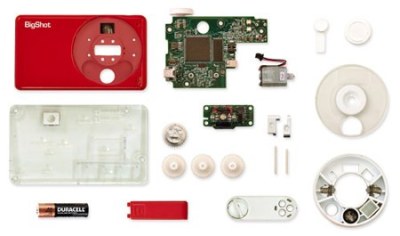:: GussetBLOG ::
Read it for free, then buy Gusset music
:: Monday, March 29, 2010 ::
Free Association Blogging
:: Sunday, November 22, 2009 ::
A Terry Gilliam original presented to photographer/assistant director Mark Egerton on completion of 12 Monkeys. Picture taken at Mark's "Images" exhibition at Photographique in Bristol, 11-24 Feb 2010. He's a thoroughly nice chap and hopefully doesn't mind me posting this here. Please follow the link to his site and check out his work.
I've just been reminded of this by the publication of Sylvain Margaine's book, Forbidden Places: Exploring Our Abandoned Heritage, which among many other fascinating abandoned spaces includes shots of the power plant used in the film, with 12 Monkeys stencils still sprayed over it.
Review spotted in the Jan 19 issue of the IET's E&T magazine.
And while I'm on the subject, check out the current issue's analysis of mash-up cultures potential in buisness:
"Different meanings and applications of mash-ups."
"Mash-ups are widely available for public use on the Internet, but are only just beginning to fulfil their potential in business environments. Organisations are looking at ways in which they can integrate mash-ups with existing software to display information collected from multiple data sources in order to aid business efficiency."
"Maps used to be simply scaled-down aerial diagrams of places containing navigational information. Now they contain layers of changing digital information, and it's a serious management issue, E&T explores."
"Mashup standards: crucial to enterprise acceptance"
"Mashup tools: enterprise enablers for the mashed age"
"Open-source ideas. Want to tap into new business? The old way was to brainstorm, but that's so last year. Today we set up reward-based 'ideagoras' - effectively a 'mash-up' management strategy. And it works."
"When Web 2.0 sneezes, everyone gets sick. Web 2.0 facilitates greater communication. But where consumers gather, so will the fraudsters and patterns are emerging on how fraudsters are utilising the weaknesses in social networks and Web 2.0."
The day I hear a board director in my office use the phrase mash-up I will fall off of my wheely chair. It doesn't look like this but I like the picture.
[source]Labels: Art, Film, FOSS, Maps, Mash-up, Photography, Technology, Urban Exploring, web 2.0
:: Dan 29.3.10 [Arc] [0 comments]::
...

Link Dump
The Atheist Billboard Campaign:: Monday, July 20, 2009 ::
E&T chronicles some truly ingenious escapes over, through, across and underneath the world’s most sinister engineering structure - the Berlin Wall.
E&T visits Estonia, a former province of the Soviet Empire, to find one of the most technologically advanced and IT-savviest nations in the world.
There's Only One Sun | Wong Kar-Wai
[thanks Natali]
Solar panels shaped like clay roof tiles
The Bigshot, a DIY digital camera designed for kids to build and use
Muji + Lego x-mas collaboration
In praise of the sci-fi corridor [via grom]Z-DAY from Peter Thomas on Vimeo.
"In late October 2009 a meteor crashed into St Werberghs, Bristol U.K. While the initial damage was contained efficiently and promptly by the authorities, Solanum-based particles from the meteor quickly spread on the wind, infecting many of the local population and causing a class-2 zombie infestation/outbreak. Within hours, the walking dead had descended on Broadmead Shopping Centre in search of meat and brains... Few survived and many souls were lost that day, however a blood-stained video tape from a local underground film-maker was recovered from the wreckage... Following a press black-out, this film documents the fateful event (dubbed "Z-Day" by locals), and provides a rare and privileged insight into a full-scale zombie attack on a densly populated urban area."
Flavorwire » Blog Archive » DJ /rupture’s Favorite Cities and Songs
"Bristol is amazing, and it’s especially amazing for all sorts of different types of bass music. For a track, it’s hard to say, because there’s so much dub, dubstep, UK garage, reggae, as well… all this stuff coming out of Bristol. But my favorite spot in Bristol, I think it’s a Sunday night party, is at this place called Cosies."Labels: architecture, Art, Atheism, Bristol, Environment, Film, Humanism, Lego, Photography, Sci-Fi, Technology
:: Dan 22.11.09 [Arc] [0 comments]::
...

Dark Flash
:: Friday, July 17, 2009 ::
New Scientist report on an Invisible flash [that] takes photos without the glare
[via Null Device]
"Dilip Krishnan and Rob Fergus at New York University created the camera in an attempt to do away with intrusive regular flashes.
"To make their "dark flash" camera, they modified a flashbulb to emit light over a wider range of frequencies and filter out visible light. The pair also had to remove the filters that usually prevent a camera's silicon image sensor detecting IR and UV rays.
"Although the dark flash gives a crisp image without disturbing those in the picture, the results have an odd colour balance that looks like a view through a night-vision scope.
"To give the pictures more normal hues, Krishnan and Fergus used colour information from a brief, flash-free photograph of the same scene taken quickly after the dark flash image.
"The second image is dim and blurry, and so it lacks some of the fine detail of its dark flash twin. However, the researchers use software to combine the sharp detail from the first image with the natural colours from the second image, resulting in a remarkably natural end result.
"The results are similar to those achieved by using a long exposure without a flash, like this image. But a long exposure shot requires those in the image to remain still for a few seconds to avoid creating motion blurs. The dark flash technique uses short exposure times that prevent those problems."
This is a very useful looking tool. On the one hand it would be great for low light shots of easily disturbed subjects, such as pets or kids. On the other it would be a gift to the stalker / paparazzi contingent, eager to get shots of people with minimum intervention.
Imagine the day when this is standard on digital compacts / camera phones and anyone could be taking photos anywhere. A market would open up in ways to combat the intrusion. Perhaps with some form of personal alarm to the combined presence of IR & UV (as both are common enough individually) in the absence of natural light.
Some dyes used in clothing glow in UV so could the same technique be applied? Maybe with jewellery, a ring or bracelet or watch strap, that glows in IR & UV but is too dim to be seen in natural light. If you catch a glimpse of a flash from it when you're out in a club you know someone must have a stalker cam near by. Check your drink.Labels: Photography, Technology
:: Dan 20.7.09 [Arc] [0 comments]::
...

The war on street photography
"A Harry Potter actor has admitted growing cannabis in his mother's north-west London home. Jamie Waylett, 19, who plays bully Vincent Crabbe in the film series, pleaded guilty to growing 10 cannabis plants in tents at the Kilburn house.":: Tuesday, March 10, 2009 ::
Hardly a surprise when you have so many teenage actors in the spotlight, but what's shocking about this story is this line:
"The court heard police found shots of the plants on Mr Waylett's camera after he was arrested for taking a picture of officers [my emphasis] as he and a friend drove past."
And then this:
Kent Police clamp down on tall photographers
The war on street photography
The new MET guidelines for offers is here.
Quoting the Reg:
"At the heart of the present controversy is the question of when behaviour becomes suspicious. Advice we have received suggests that the police may arrest an individual under PACE s.1 or the Terrorism Act s.44 where they have reasonable suspicion that an illegal act is being carried out.
"In other words, photography on its own is not suspicious behaviour: police suspicions need to be grounded in other evidence, and it is not reasonable to throw a blanket suspicion over the activities of all photographers.
"Yet here is the Met guidance in respect of s.44: "Officers have the power to view digital images contained in mobile telephones or cameras... provided that the viewing is to determine whether the images... are of a kind, which could be used in connection with terrorism."
"Not quite. The Met guidelines make no mention of reasonable suspicion: in effect, they duck the single issue that is at the heart of so much grief."
In other photography related news:
Flexible fabric that takes 'takes pictures'
Exploiting Collective Effects of Multiple Optoelectronic Devices Integrated in a Single Fiber
Ideal for adaptive camouflage I imagine. Future street photographers could wear outfits made out of this so that they can capture the images they want unobtrusively whilst simultaneously blending into the scenery.Labels: Law, News, Photography, Technology
:: Dan 17.7.09 [Arc] [0 comments]::
...

E & I
In a return to my occasional series on unusual magazines found lying around in the office kitchen, I am now a convert to Engineering and Technology magazine.
For a start, here are some interesting links from October’s fashion and technology special:
A new breed of robot
Catwalk goes techno
Haute tech couture
And the current issue is a Lego special!
Building on a dynasty
Play for tomorrow
Lego for life
Inventors’ inbox
Falling for technology
Diy society
Child's play
And more
From the DIY Society article:
www.modumobile.com
www.buglabs.net
wiki.openmoko.org
www.openhandsetalliance.com
www.sand-labs.org
www.gumstix.com
I hadn't realised how far the open handware movement had got!Labels: DIY, Engineering, Fashion, FOSS, Lego, Technology
:: Dan 10.3.09 [Arc] [1 comments]::
...









